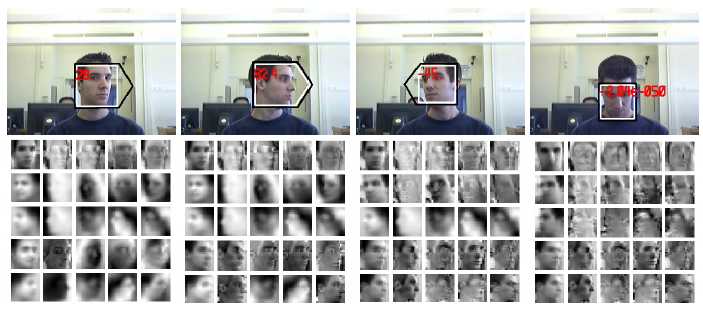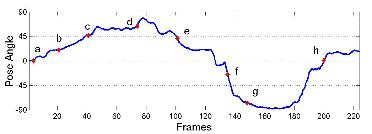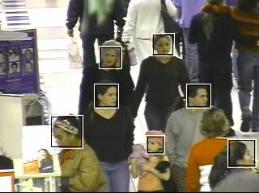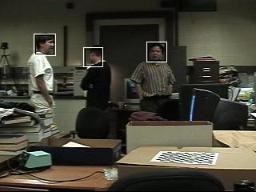|
Publication:
1.
Peng Wang and Qiang Ji, "Learning Discriminant Features for
Multi-View Face and Eye Detection", IEEE
International Conference on Computer Vision and Pattern Recognition (CVPR),
San Diego, CA, June 2005
2.
Peng Wang, Qiang Ji,
"Multi-View Face Tracking with Factorial and Switching
HMM", Workshop
on Application of Computer Vision (WACV), 2005
3. Peng Wang, Qiang Ji, "Multi-View Face Detection under Complex Scene based on
Combined SVMs", International Conference on Pattern
Recognition (ICPR), 2004
A Paper in submission to conference
A Paper in submission to journal
|
|
|
2.
Collaborative Multi-View Face Tracking and Online Learning
To address the drifting problems associated with the traditional
object tracking under significant changes in both objects and
environmental conditions, a novel collaborative tracking algorithm is presented. The collaborative tracking method probabilistically
combines measurements from specific face models with measurements from a generic face model in a dynamic Bayesian network for robust
multi-view face tracking. In addition, the probabilistic tracking results are used to incrementally adapt the specific face models to
individuals. The collaborative tracking method can handle large face pose changes, and can
efficiently build specific face models online.
|
|
Online learning face
appearance model using PPCA model
The each view of a multi-view face is modeled with a
Probabilistic PCA (PPCA) model. The model
parameters are online
incrementally updated using tracking result. The following figure
shows tracking
results, and
online learned PPCA model for each view. The columns show mean,
and
principal
components in PPCA models.
|
|














